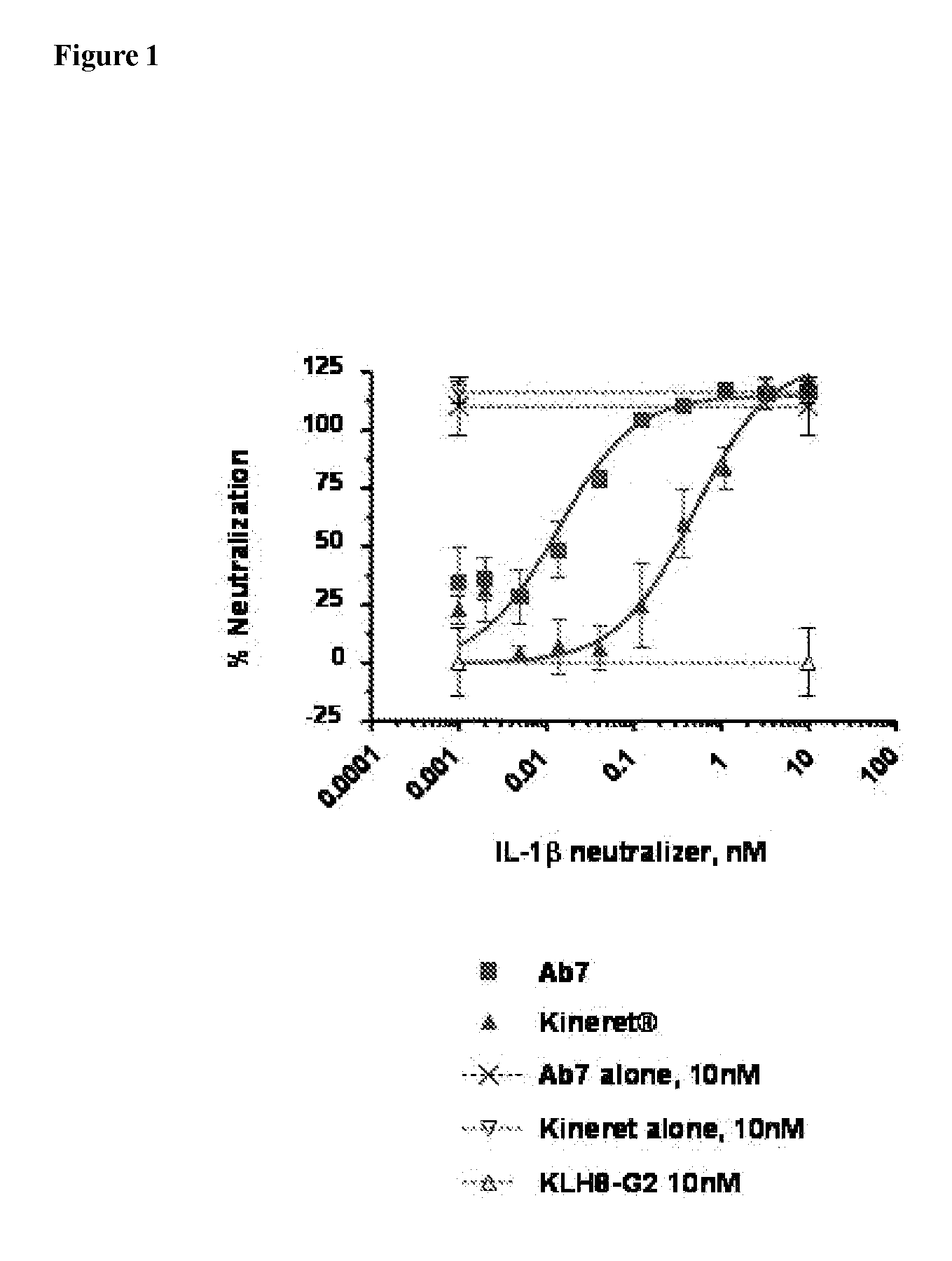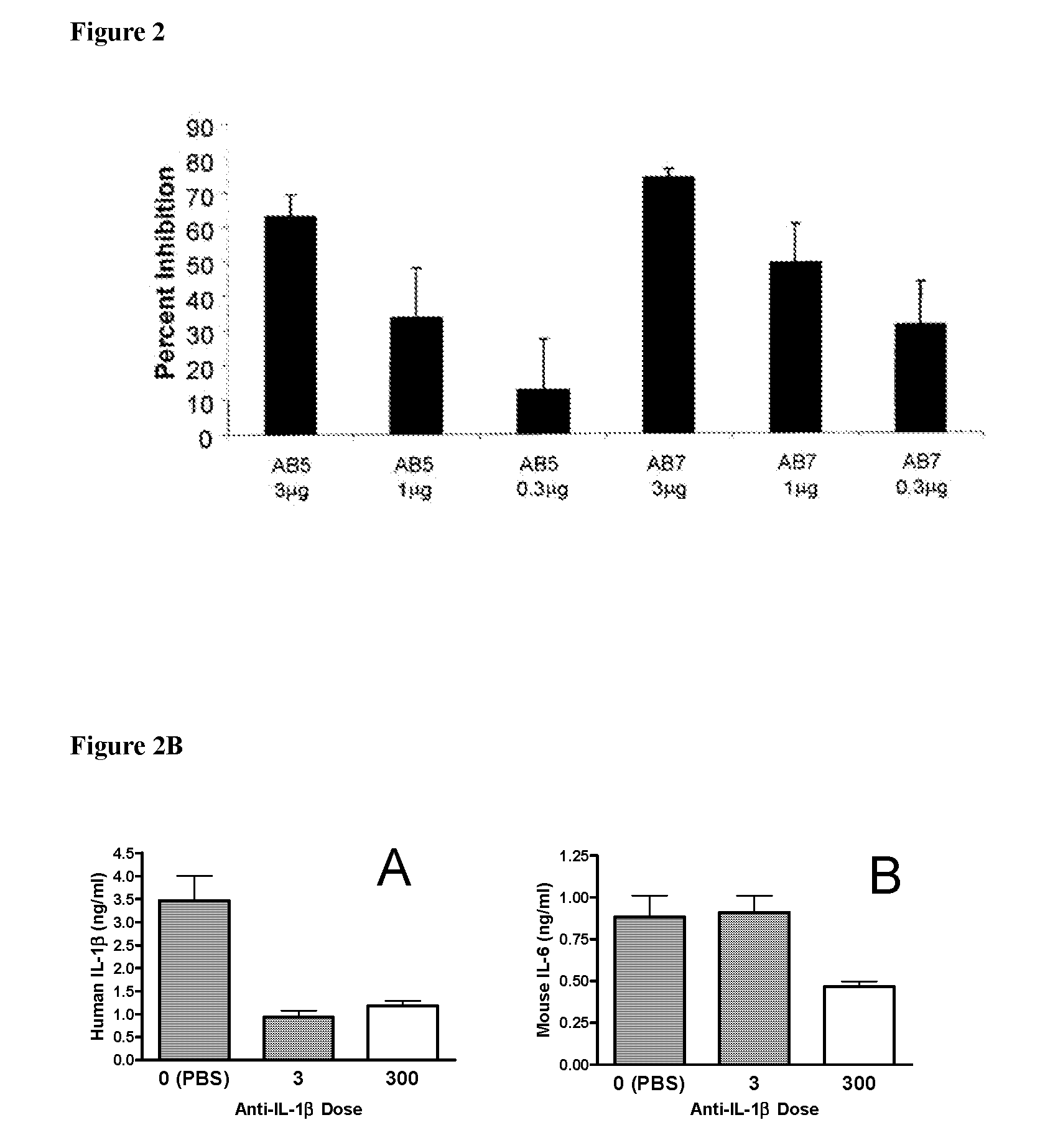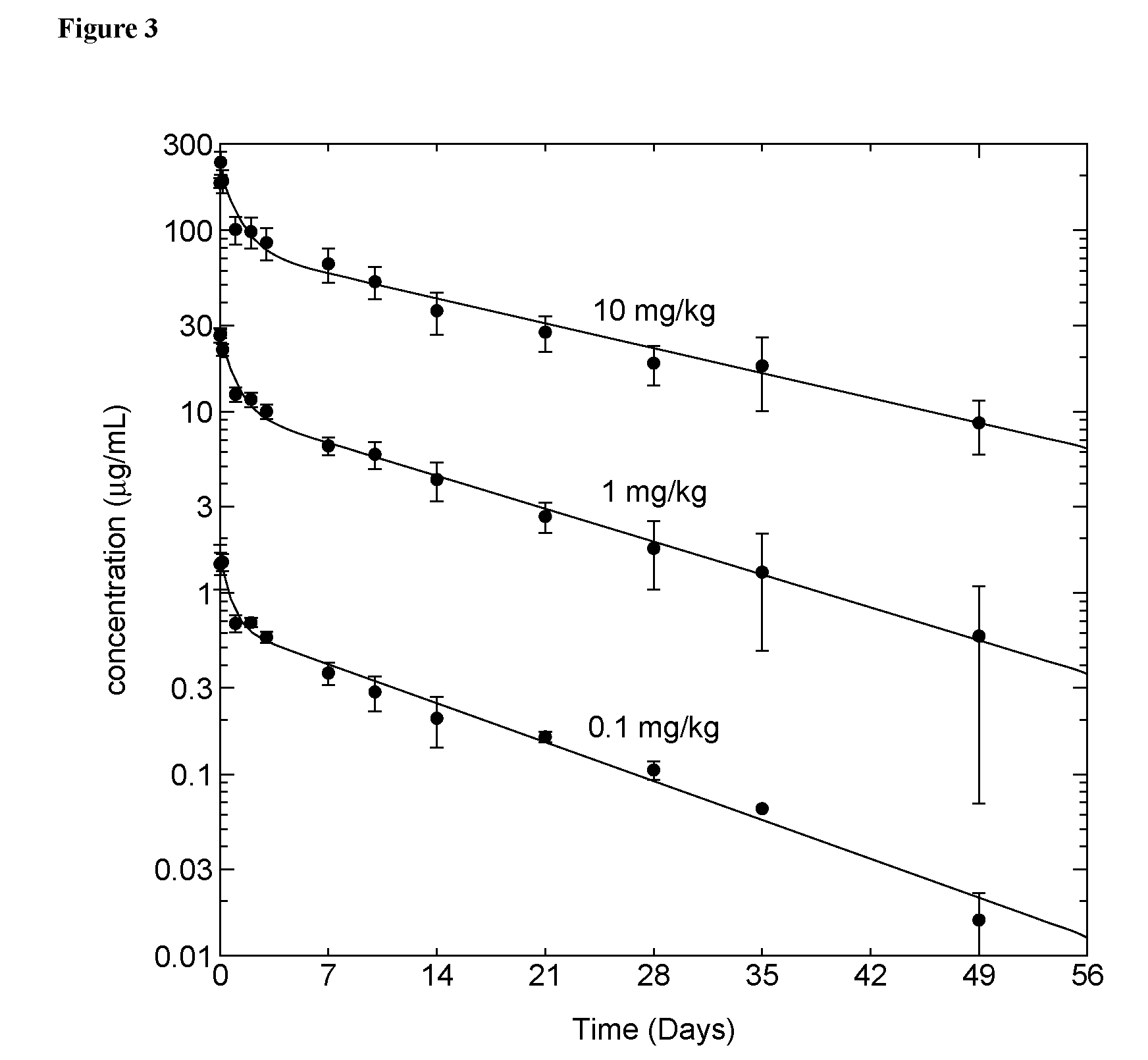Methods for the treatment of il-1beta related diseases
a technology for il1beta and related diseases, applied in the field of methods for the treatment of il1beta related diseases, can solve the problems of reduced amount of secreted insulin, and increased risk of il1beta-related complications, so as to reduce the amount, frequency or duration of treatment, and reduce the effect of treatment with at least one active agen
- Summary
- Abstract
- Description
- Claims
- Application Information
AI Technical Summary
Benefits of technology
Problems solved by technology
Method used
Image
Examples
example 1
Inhibition of IL-1β Using a High Affinity IL-1β Antibody in an In Vitro Cell Based Assay, with IL-1 Induced Production of IL-8 as a Read-Out
[0224]The inhibitory effect of the IL-1β-specific antibody was compared to a non-antibody inhibitor of the IL-1 pathway, Kineret® (anakinra), which is a recombinant IL-1 receptor antagonist. Fresh, heparinized peripheral blood was collected from healthy donors. 180 μl of whole blood was plated in a 96-well plate and incubated with various concentrations of the antibody AB7 (U.S. application Ser. No. 11 / 472,813, WO 2007 / 002261) and 100 pM rhIL-1β. For Kineret®-treated samples, Kineret® and rhIL-1β were combined 1:1 prior to mixing with blood. Samples were incubated for 6 hours at 37° C. with 5% CO2. Whole blood cells were then lysed with 50 μl 2.5% Triton X-100. The concentration of interleukin-8 (IL-8) in cleared lysates was assayed by ELISA (Quantikine human IL-8 ELISA kit, R&D Systems) according to manufacturer's instructions. IL-8 concentrati...
example 2
In Vivo Inhibition of the Biological Activity of Human IL-1β Using IL-1β-Specific Antibodies, as Measured by the Impact on IL-1β Stimulated Release of IL-6
[0226]To confirm the in vivo efficacy of AB7, its ability to block the biological activity of human IL-1β was tested in mice. Details of the assay are described in Economides et al., Nature Med., 9: 47-52 (2003). Briefly, male C57 / B16 mice (Jackson Laboratory Bar Harbor, Me.) were injected intraperitoneally with titrated doses of AB7, another IL-1β antibody, AB5, or a control antibody. Twenty-four hours after antibody injection, mice were injected subcutaneously with recombinant human IL-1β (rhIL-1β) (from PeproTech Inc., Rocky Hill, N.J.) at a dose of 1 μg / kg. Two hours post-rhIL-1β injection (peak IL-6 response time), mice were sacrificed, and blood was collected and processed for serum. Serum IL-6 levels were assayed by ELISA (BD Pharmingen, Franklin Lakes, N.J.) according to the manufacturer's protocol. Percent inhibition was ...
example 3
Pharmacokinetics of an Anti-IL-1β Antibody Following Administration of a Single Intravenous or Subcutaneous Dose to Rats
[0229]To examine the pharmacokinetic profile, an IL-1β antibody designated AB7 was administered to adult male rats as an intravenous (IV) bolus into the tail vein at doses of 0.1, 1.0, or 10 mg / kg (Groups 1, 2, and 3 respectively) or a subcutaneous (SC) dose between the shoulder blades at 1.0 mg / kg (Group 4). Blood samples were collected via the jugular vein cannula or the retro-orbital sinus at specified times for up to 91 days after dosing. Blood samples were centrifuged to obtain serum. Samples were analyzed for the concentration of anti-IL-1β antibody using an alkaline phosphatase-based ELISA assay as follows.
[0230]IL-1β (Preprotech) was diluted to 0.5 μg / mL in PBS and 50 μL of this solution was added to wells of Nunc-Immuno Maxisorp microtiter plates (VWR) and incubated overnight at 2-8° C. The antigen solution was removed and 200 μL of blocking buffer [1% bov...
PUM
| Property | Measurement | Unit |
|---|---|---|
| Time | aaaaa | aaaaa |
| Time | aaaaa | aaaaa |
| Time | aaaaa | aaaaa |
Abstract
Description
Claims
Application Information
 Login to View More
Login to View More - R&D
- Intellectual Property
- Life Sciences
- Materials
- Tech Scout
- Unparalleled Data Quality
- Higher Quality Content
- 60% Fewer Hallucinations
Browse by: Latest US Patents, China's latest patents, Technical Efficacy Thesaurus, Application Domain, Technology Topic, Popular Technical Reports.
© 2025 PatSnap. All rights reserved.Legal|Privacy policy|Modern Slavery Act Transparency Statement|Sitemap|About US| Contact US: help@patsnap.com



